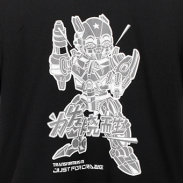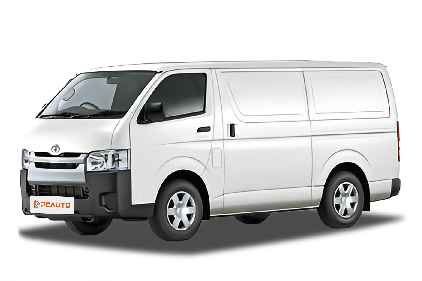Q
toyota hiace how many seater
The Toyota Hiace is a total workhorse and family favorite here in Malaysia, killing it in both commercial and personal use. Seating? It varies by model and spec, but the standard versions typically roll with 12 to 15 seats—perfect for big families hitting the road or businesses shuttling folks around. Need more? The high-roof variants often up the ante on seating options to fit even bigger crews. What really makes the Hiace stand out is its roomy interior, rock-solid reliability, and comfy ride—ideal for those long Malaysian road trips or when you’re hauling passengers all day. Under the hood, you’ve got choices too: diesel or petrol engines, so you can pick what suits your driving style and fuel habits best. And for the cargo haulers? There’s a van version where you can fold or yank out the rear seats to free up tons of space. Let’s not forget its tough-as-nails build and low maintenance costs—no wonder it’s the go-to for so many Malaysian businesses and families. Whether it’s daily commutes or commercial runs, the Hiace just gets the job done, and done well.
Special Disclaimer: This content is published by users and does not represent the views or position of PCauto.
Related Q&A
Q
how much is Toyota Hiace bus
The Toyota Hiace van's pricing in Malaysia can vary quite a bit depending on the trim level, model year, and market demand. Brand-new ones typically range from around RM200,000 to RM400,000. That all hinges on things like how many seats it has, the engine type—diesel or petrol—and extra features such as air conditioning and nicer seats.
For used Hiace vans, the price fluctuates even more based on age, mileage, and overall condition. You're looking at roughly RM80,000 to RM250,000 for a pre-owned model.
What makes the Hiace such a hit here? It's all about that tough-as-nails reliability, spacious interior, and low maintenance costs. Both businesses and families love it, especially for long road trips or shuttling groups around. The Malaysian market usually sees two main variants: the standard version and the high-roof variant. The high-roof option gives you better headroom, which is great if you're after a bit more comfort.
On top of that, the Hiace's fuel efficiency and solid dependability keep it pretty competitive in the local market. Toyota's got service centers all over the country, and parts are easy to come by, which helps keep those long-term running costs down too.
If you've got specific needs in mind, I'd recommend popping by your nearest Toyota dealership. They can hook you up with the latest prices and any ongoing promotions. And hey, take it for a test drive while you're there—get a feel for how it drives and really see if it fits what you're looking for.
Q
how long is Toyota Hiace
Toyota Hiace dimensions vary by model and generation, but here in Malaysia, the current fifth-gen version (around since 2019) is what you'll mostly see. The standard wheelbase clocks in at roughly 5,265mm, while the long wheelbase stretches out to 5,915mm. This sizing strikes a solid balance—nimble enough for zipping through city streets, yet roomy enough to handle both passengers and cargo.
It’s no wonder the Hiace is a top pick for Malaysian businesses and big families alike. That length directly impacts how much it can carry. The standard model, for example, can fit 12 to 14 seats, making it great for group transport. The long-wheelbase? Perfect for tour vans needing extra luggage space or logistics work where cargo capacity matters more.
But here’s the thing Malaysian buyers need to remember: our local roads. Tight city streets and parking garages with height limits can be tricky. Luckily, the Hiace’s compact height (around 1,990mm) handles those spots pretty well.
Oh, and if you’re looking at used models, the Hiace holds its value surprisingly well. Durability and easy maintenance are big reasons why. Just a pro tip: keep an eye on the suspension system if you’re hauling heavy loads regularly—staying on top of that will keep you safe on the road for years to come.
Q
how much is a Toyota Hiace van
In Malaysia, the price of a Toyota Hiace van can vary quite a bit depending on the model, specs, year, and how the market's moving. New ones typically run between 150,000 to 250,000 Ringgit. It really hinges on the trim you go for—like the standard or the more decked-out luxury version—and whether you add extras such as air conditioning or advanced safety systems.
For used Hiaces, the price fluctuates based on condition, mileage, and how old the van is, usually landing in the 80,000 to 150,000 Ringgit range.
The Hiace has built a solid rep here for being tough as nails and offering serious cargo-hauling capability, making it a top pick for businesses—think logistics, deliveries, or even converting it into a passenger van. Its reliable engine and low maintenance costs are big reasons it’s such a hit in the Malaysian market. Plus, with its roomy interior and flexible seating/layout options, it’s also a solid choice for family trips or group outings.
If you’re looking to pick one up, I’d recommend chatting with your local dealer to get the latest quotes and any ongoing promotions. And don’t forget to factor in long-term costs and warranty coverage too—that stuff matters.
Q
how much is a Toyota Hiace?
In Malaysia, the Toyota Hiace comes with a range of price tags depending on the model, specs, and year. Brand-new ones typically go for between RM150,000 to RM250,000, and that all hinges on which variant you pick—like the Standard, Deluxe, or Commercial trim. As for used Hiaces, you're looking at anywhere from RM50,000 to RM150,000, with condition and mileage being the big factors there.
Malaysian buyers can't get enough of the Hiace, and it's easy to see why. It's built tough, offers loads of space, and doesn't guzzle fuel—perfect whether you're shuttling the family around or using it for business. Safety-wise, it's got your back with features like ABS and multiple airbags, so both driver and passengers stay protected.
On top of that, keeping a Hiace on the road won't break the bank. Maintenance costs are reasonable, parts are easy to find, and repairs are straightforward—all reasons it's been a mainstay in Malaysia for so long. If you're thinking about getting one, my advice is to figure out what you really need in terms of specs, then head to an authorized dealer for a test drive. That way, you can make sure it checks all your boxes before you commit.
Q
For the commercial vehicle model, where is the fuse box located in the Toyota Hiace?
Hey there, fellow Hiace drivers! Let's talk about where to find the fuse box in your Toyota Hiace Commuter. This workhorse usually tucks its fuse box behind the side panel under the driver's seat. Some models might also have one in the engine bay, near the battery. But hey, it can vary a bit depending on the year and trim, so your best bet is to hit up the "Electrical System" section in your owner's manual – or just flip open the fuse box cover and check the diagram on the back.
That fuse box is like the gatekeeper for your van's electrical system. If your headlights, AC, or cigarette lighter suddenly call it quits, the first thing to do is check if the corresponding fuse has blown. And when replacing a fuse, stick to the same amperage rating – don't get creative there!
Day-to-day, keep that fuse box dry and clean to avoid any short circuits. If the same fuse keeps blowing, that's a red flag – you might have a wiring issue that needs a pro's touch, so don't delay getting it checked out.
The Toyota Hiace is a staple in Southeast Asia, and its electrical system is built to handle those tropical conditions, but regular checks are still part of good maintenance. For other common stuff like battery care or adjusting the lights, the owner's manual is your go-to guide. Keep rollin'!
Q
Toyota Hiace how many seats
The Toyota Hiace is a staple in Malaysia's commercial and family vehicle scene, with seating options that vary by trim. The standard models, like the Hiace Van, typically offer 12 to 15 seats—perfect for commercial shuttle services or group outings. On the flip side, the more upscale variants such as the Hiace Super Grandia trim down to 9 to 11 seats, prioritizing comfort with premium upholstery and rear air-conditioning, ideal for family trips or business reception. It is worth noting that some aftermarket shops also offer custom seating configurations, such as adjusting to 13 seats or reducing to 8 seats to flexibly adapt to different uses. For Malaysian buyers, the Hiace's biggest draws are its legendary durability, high ground clearance that handles local road conditions like a champ, and wallet-friendly maintenance costs. The diesel engine variants, in particular, stand out for their impressive fuel efficiency. For the most accurate specs, though, your best bet is to hit up a Toyota Malaysia authorized dealer. They can walk you through the latest model year details, including safety features like ABS and dual airbags—stuff that could definitely sway your final purchase call.
Q
How many models does Toyota Hiace have
The Toyota Hiace is a total workhorse and family favorite here in Malaysia, killing it in both commercial and personal use. You’ll mainly find a few go-to variants cruising our roads: the standard Hiace Van, the Hiace Commuter (that’s the people-hauler), and the top-dog Hiace Super Grandia (the luxury liner). These aren’t just badge swaps—they’re built for different jobs. The Hiace Van? It’s all about getting cargo from A to B, no frills, just space. But the Commuter and Super Grandia? They’re where comfort takes the wheel, packing nicer seats, better air-con, and all that extra kit to keep passengers happy.
Under the hood, Toyota’s got you covered with diesel and petrol engine options, so whether you’re after torque for heavy loads or something smoother for daily drives, there’s a Hiace for that. Malaysians swear by this van for a reason—its legendary durability and rock-solid resale value are huge wins. Plus, that cavernous interior and flexible seating? Perfect for everything from running a business to shuttling the whole family (and then some).
If you’re thinking of adding a Hiace to your fleet or driveway, do yourself a favor: figure out what you’ll *really* use it for, then hit up your nearest authorized dealer for a test drive. Trust me, you’ve gotta feel that space and drive to get the full picture.
Popular Cars
Model Year
Car Compare
Car Photo
Latest Q&A
Q
Why is gasoline a fuel?
Gasoline can serve as a fuel because it possesses core properties suitable for providing power and the ability to convert energy. It is a hydrocarbon mixture obtained through fractional distillation and cracking of petroleum, mainly containing C5-C12 aliphatic hydrocarbons, naphthenes, and a small amount of aromatic hydrocarbons. It is characterized by volatility and flammability, with low viscosity facilitating smooth flow in injection systems, and rapid evaporation enabling quick formation of a uniform combustible mixture with air. Gasoline stores chemical energy; when ignited by a spark plug in the engine combustion chamber, it burns rapidly to release a large amount of thermal energy, which pushes the piston to move and converts into mechanical energy, providing power for vehicles such as cars and motorcycles. In addition, the anti-knock property of gasoline (measured by octane number) can adapt to engines with different compression ratios, ensuring stable operation and performance; it has a high energy density, storing more energy per unit volume, good combustion efficiency, and high availability of gas stations for convenient use. Therefore, it has become the main fuel for spark-ignition internal combustion engines and is widely used in transportation and related fields.
Q
What are 1st, 2nd, and 3rd family gases?
The first, second, and third family cars are vehicle categories classified based on the stages of family car-purchasing needs. The first family car is an entry-level economical model, such as the Perodua Axia and Proton Saga, priced at approximately 30,000 to 50,000 Malaysian ringgit. It emphasizes fuel efficiency and practicality, making it suitable for young families purchasing a car for the first time. The second family car falls into the mid-range category, offering more space and enhanced features, such as the Proton Persona and Toyota Vios, priced between 60,000 and 100,000 Malaysian ringgit, catering to the comfort requirements of growing families. The third family car is a premium model or an MPV/SUV, such as the Proton Exora and Honda CR-V, priced above 100,000 Malaysian ringgit. It boasts spacious interiors and upscale configurations, ideal for larger families or long-distance travel. Malaysian consumers typically prioritize fuel efficiency, maintenance costs, and space when selecting a vehicle. Families at different life stages adjust their car choices accordingly. For instance, small families may begin with the first category, upgrade to the second after having children, and larger families often opt for the third category.
Q
What are the four types of natural gas?
Natural gas can be classified into four main types based on its source: gas field gas (pure natural gas), associated petroleum gas, condensate field gas, and coalbed methane. Gas field gas is directly extracted from gas wells, typically containing over 90% methane with minimal impurities. Associated petroleum gas is a byproduct of oil extraction, containing not only methane but also significant amounts of other hydrocarbons such as ethane and propane. Condensate field gas yields light hydrocarbon fractions during extraction, characterized by a high methane content and small quantities of heavier hydrocarbons like pentane. Coalbed methane is extracted from underground coal seams, primarily consisting of methane and nitrogen, and must have a methane content exceeding 40% to be utilized as fuel. Due to compositional differences, these natural gas types vary in calorific value and applications. The first three are commonly used for urban gas supply, whereas coalbed methane requires purification before effective utilization. As a clean and efficient energy source, the development and utilization of these diverse natural gas types play a crucial role in optimizing energy structure.
Q
What are the three types of fuel gas?
Common fuel gases are mainly divided into three types: natural gas, liquefied petroleum gas (LPG), and manufactured gas. Natural gas is a flammable gas existing in nature, with methane as its main component. It is colorless and odorless, leaves no residue after combustion, and has high thermal efficiency, making it a clean energy source. Liquefied petroleum gas is a by-product of the petroleum refining process, whose main components include propane and butane. It is a gas at room temperature but can be converted into liquid through pressurization and cooling, facilitating storage and transportation. Manufactured gas is generated through thermochemical reactions of fossil fuels such as coal or petroleum under specific conditions, with main components including hydrogen, carbon monoxide, and methane. It has low production costs but produces certain pollution after combustion, so ventilation should be ensured during use. These three fuel gases have different application scenarios in the energy supply field, and their calorific values and usage characteristics also vary. For example, the calorific value of natural gas is approximately 33,000-36,000 kcal per cubic meter, that of LPG is about 90,000 kcal per kilogram, and that of manufactured gas is roughly 3,500-4,200 kcal per cubic meter. The different calorific values make them suitable for different energy demand scenarios such as households and industries.
Q
Is unleaded petrol a gas?
Unleaded gasoline is not a gas but a liquid fuel. It refers to gasoline with a lead content of less than 0.013 grams per liter and without the addition of tetraethyl lead as an anti-knock additive during the refining process. Its octane rating is typically 95, slightly lower than the 97 of leaded gasoline. The use of unleaded gasoline can effectively reduce emissions of harmful substances such as hydrocarbons, carbon monoxide, and nitrogen oxides in vehicle exhaust, thereby lowering pollution risks including smog, toxic gases, and acid rain. However, it should be noted that while unleaded gasoline contains no artificially added lead, it still retains trace amounts of lead from crude oil. Additionally, its combustion releases gases, particulate matter, and condensates, with particles smaller than 2 microns in diameter being particularly prone to prolonged suspension in the air and subsequent human inhalation. Thus, potential health impacts remain a concern. Currently, most vehicles can use unleaded gasoline directly, though certain models require selecting the appropriate octane grade as recommended by the manufacturer to ensure optimal engine performance and longevity.
View MoreRelated News

Toyota HiAce and Mitsubishi Outlander upgraded to receive five-star safety rating
WilliamSep 24, 2025

The new Toyota Corolla is launched in China, with a wheelbase extended to 2750mm
AshleyDec 23, 2025

Will the Toyota Yaris Cross come to Malaysia? If it comes, how much will it sell for?
JamesDec 19, 2025

2026 Toyota HiLux receives five-star ANCAP safety rating in ANCAP
MichaelDec 12, 2025

2026 Toyota bZ4X features a larger battery and longer range but needs to be sold at a lower price
WilliamDec 12, 2025
View More















Pros
Cons